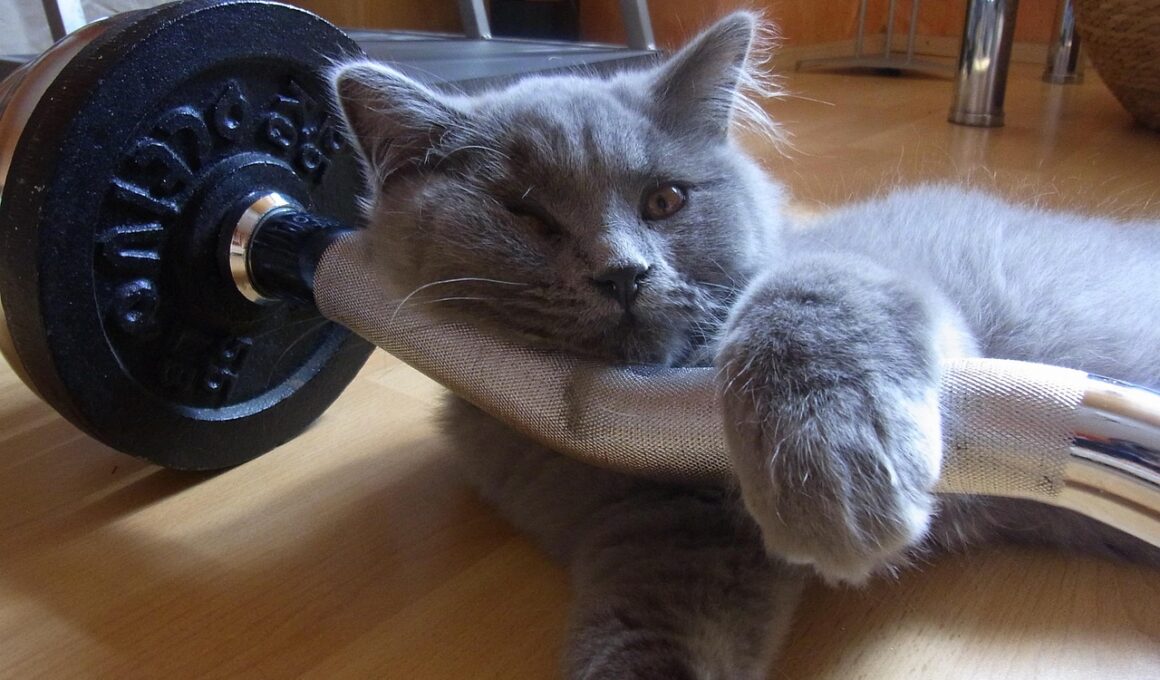Introduction to Clicker Training for Cats: Getting Started
Clicker training for cats is a popular method that utilizes a unique sound to aid in behavioral training, making it an effective approach. This method is based on positive reinforcement, encouraging desired behaviors through rewards. Cats, like humans, respond positively to rewards and treats, especially when they correlate with learning new commands. Using a clicker allows for precise timing, marking the exact moment your cat performs a desired behavior. This decreases confusion and increases the likelihood of successful learning. To start with clicker training, you’ll need a few essential items, including a clicker, treats your cat loves, and a quiet space for training. It’s crucial to pick a time when your cat is focused and motivated to learn. Initially, you will want to familiarize your cat with the sound of the clicker, associating it with positive experiences. Training in short sessions of about 5-10 minutes is ideal to keep your cat engaged without overwhelming them. Patience and consistency are paramount in creating a productive training environment, ensuring your once-unruly feline develops positive, compliant behaviors.
One of the critical concepts of clicker training is timing. The click sound must occur the instant your cat performs the desired action, such as sitting or standing on command. This prompts a strong association between the behavior and the reward, which is vital for effective training. Start with simple commands that your cat can easily grasp, gradually progressing to more complex behaviors. Keep in mind that some cats may take longer to learn than others due to their unique personalities and temperaments. It’s essential to be responsive and adapt your approach based on their progress. Additionally, different cats may respond best to varying types of training. For instance, some cats may prefer higher-value treats, while others may be motivated by praise or their favorite toy. Observing your feline companion’s reactions will help tailor the training session to their preferences, making it more effective. By understanding your cat’s specific likes and dislikes, you can significantly enhance the training experience. Yet never forget to make each training session enjoyable and fun for both you and your cat to foster a stronger bond.
The Benefits of Clicker Training for Cats
Clicker training offers numerous advantages, making it a favored option for many cat owners. First and foremost, it nurtures an essential bond between the pet and the owner, as collaborative learning fosters shared experiences. Under this method, cats are likely to develop trust and confidence, knowing that their efforts are recognized and rewarded. Moreover, clicker training is very versatile, as it can be used to teach various commands, tricks, and even correct undesired behaviors. This technique will help enforce boundaries without inducing fear or aggression, which is often counterproductive. Training also keeps your cat mentally stimulated, as they will need to focus and engage in problem-solving. It can prevent boredom, which sometimes leads to destructive behaviors, by offering alternative, acceptable activities. Clicker training can also be beneficial for shy or anxious cats, providing them with mental challenges that create a sense of security. Over time, as your relationship with your cat develops, training sessions will become more effective. Those incremental improvements encourage long-term learning and lasting behavioral changes.
It’s also important to recognize the need for consistency and routine during clicker training activities. Establishing a designated time each day for training can help your cat understand that specific moments are meant for learning and engagement. Repetition helps solidify commands, allowing your cat to practice consistently in a stress-free environment. As your training progresses, it’s a good idea to gradually increase the level of difficulty in your sessions. Initiate with basic commands and then introduce more complex behaviors when your cat consistently succeeds. This progressive method will maintain your cat’s interest and keep them challenged. Equally, practicing in various environments can enhance the efficacy of your clicker training. Cats can generalize learned commands and behaviors better when practiced in diverse settings. Thus, switching up the location can strengthen their understanding and adaptability. Remember the necessity of keeping training sessions positive by celebrating even small victories, reinforcing the idea that learning is a rewarding experience. As always, be patient and compassionate throughout the training process, as every cat progresses at a different pace.
Common Training Techniques Used With Clickers
Several specific techniques can effectively enhance clicker training. One common approach is known as the “shaping” technique, wherein you reinforce small steps toward the final desired behavior. Suppose you want your cat to perform a complex trick like rolling over. You would first reward them for simply lying down, then clicking and treating for the next action of turning. Continuing this method until they achieve the entire behavior gradually builds their confidence and skill. Additionally, “capturing” is another technique to consider; this involves rewarding your cat during spontaneous moments of desired behavior. For instance, if your cat naturally sits, you would use the clicker to mark that action. This introduces them to the concept that certain actions lead to rewards, promoting future repetitions. Unlike traditional training methods that often implement corrections, clicker training focuses on reinforcing positive behavior. Always avoid using criticism or punishment, as these elements can lead to fear and anxiety, impeding your training success. Understanding these techniques will substantially empower your training approach, leading to positive outcomes.
Incorporating clicker training into your cat’s routine can also pave the way for new experiences beyond basic commands. Engaging tasks and stimulating games can build confidence and refine motor skills. For instance, you can teach your cat to navigate an obstacle course using the clicker as motivation. This not only promotes physical activity but strengthens the bond between you and your pet. Furthermore, clicker training can be beneficial during veterinary visits or grooming sessions. Training your cat to accept a carrier or remain calm on the examination table can significantly reduce stress levels for both parties. By creating positive associations with previously feared situations, you’ll build resilience in your cat. In addition, proficiency in clicker training may assist in alleviating issues like litter box problems or food aggression. By reinforcing appropriate behaviors, you can guide your cat toward choosing desired actions. This method of training can help lead to a happier and healthier cat, creating a joyfully knowledgeable companion for your household. Therefore, clicker training proves itself to be an invaluable tool for a harmonious relationship between humans and their feline friends.
Conclusion: The Power of Clicker Training
In conclusion, clicker training stands as a powerful method for training cats effectively. With dedication, patience, and the proper approach, both you and your cat can enjoy productive training sessions and enriching experiences. The supportive atmosphere that this method creates fosters not just obedience but also a strong bond between you and your pet. Furthermore, the skills learned will carry over into various aspects of your cat’s life, promoting confidence and reducing undesirable behaviors. By understanding your cat’s reactions and preferences, you can tailor each session to best suit their needs, enhancing the likelihood of successful outcomes. And while challenges may arise during the training process, the joy of witnessing your cat’s progress is worth the effort invested. As training sessions become a fun opportunity for connection and collaboration, you’ll find yourself deepening your relationship with your feline companion. The philosophy of clicker training also aligns with supportive pet ownership, focusing on understanding and nurturing your cat’s potential. Embracing this constructive method will undoubtedly lead to a more seamless and fulfilling partnership with your cherished companion.
Ultimately, clicker training offers adaptable opportunities for cat owners to explore various aspects of their pets’ behavior. Whether teaching a simple trick or addressing behavioral concerns, this method empowers you to cultivate a positively engaged relationship with your kitty. Each training session becomes a chance for learning and growth rather than a chore, enriching daily interactions. By embracing clicker training as part of your routine, you not only instill desired behaviors but also create an environment about cooperation and understanding. Just remember to approach the training process with compassion and an open mind, evolving with your cat as they navigate their journey. Celebrate small victories, as they pave the way to bigger triumphs in the realm of training. And always ensure that the connection you foster with your feline is built on trust, love, and mutual respect as you train them. Enjoy the journey of discovery and mastery that will yield both amusing moments and fulfillment for both you and your furry friend. The commitment you invest in clicker training can profoundly impact your relationship, making your companion a well-adjusted and stimulating playmate.


